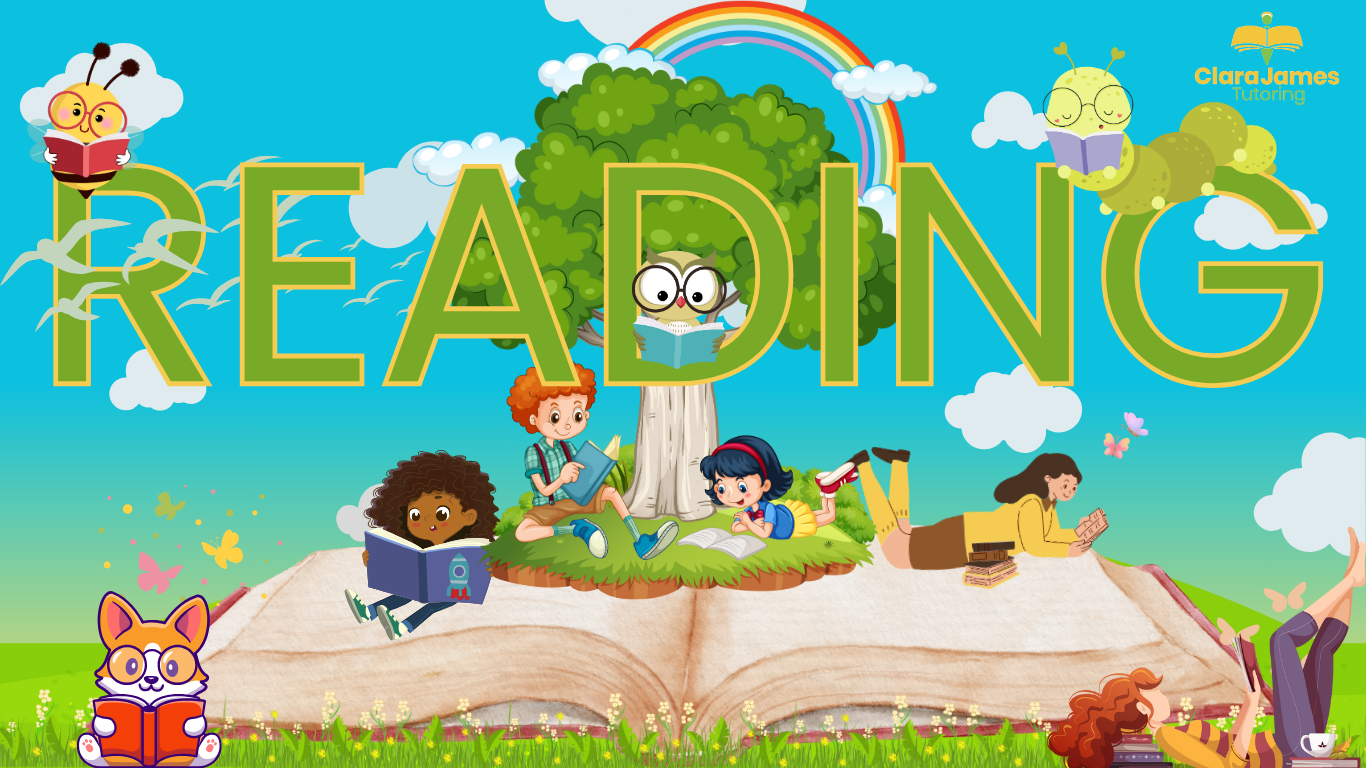Clara James Tutoring
BLOG POSTS

The Real Efforts of Reading
Why do some people find reading such a pleasure, when for others it's such a chore?
A lot of the kids I work with often state that they don’t like reading.
They wish they did because they know it would help them with their spelling, vocabulary, grammar, but it just seems like such an effort after a day of school, homework, or whatever else. So, it’s always put off until tomorrow. And as they say tomorrow, rarely ever comes.
One of the first things I learned 20 years ago when studying dyslexia, is that for some children every time they commit to reading something it is like learning a new language with a completely different alphabet. Trying to remember what each individual symbol (letter) means or stands for, and if it points in this direction it might be a b, but if I flick it around it becomes a d, but if I now tip it upside down I have a q, yet if I flip it again I have a p. But they all pretty much look the same, or it did a second a go when I last looked at it.
Reading is like an impossible task. Then for other people there is no stability for the letters on the page, as they float around.
We can suggest they use visual cues, yet images normally present themselves only in children's books and as we get older that's not what we're looking for. We want something more inspiring, something that is going to make us think, inspire us.
So, what do we do?

I think we often think that reading must take the form of a book. Maybe something classical perhaps not Dante’s Inferno or Withering Heights, but something notable.
Honestly, a range of blog posts, magazine articles, newspaper reports will do the job just as well. Especially as in English Language Paper 2 you are probably going to be asked to write a speech, a newspaper report, a magazine article, etc so experience of the language used in these, their layout, and presentation will be potentially more useful in that context.
I’d also recommend audiobooks especially if you sit the exams this summer and you are wanting to cram before then. There will be a limited number of books you’ll be able to read in that time, but if you put the speed of an audio book on 1.5x you’ll be able to expose yourself to far more books and it won’t need to be the chore that reading potentially could be.
If you do want to pick up a book to read, I was recommended “I Must Betray You”. You will need your tissues. It’s written from the perspective of a teenage boy in Communist Romania. It was recommended to me by another mum after her daughter had read it. It was a really good thought inspiring book. Thee sort you struggle to put down.
I also enjoyed Animal Farm by George Orwell if you’re not doing it as one of your set texts. The first time I read it, I was 18, sat on the beach with friends in Crete waiting for the transfer back to the airport to come home. It can be read and interpreted on many levels which is perhaps part of its appeal.
If you have any other books, I can recommend to those I work with I’d love to hear them.
Morning,
I hope the week is going well.
So many people seem to be doing D of E and work experience
at the moment, good luck if that’s you and if you’re at Marlow Camp next
fingers crossed for good weather!
I’ve just finished a lesson on division. It seems to be
something that messes with the brains of so many people.
I found it got easier when I stopped thinking about it as
division and instead thought about it as multiplication. So, if for example I
had the question 396 divided by 3, I would look at it as 3x what = 3. My answer
would be 1. How many times would I need to multiply 3 to get to 9, (my answer
would be 3). Then 3x something = 6. My answer would be 2. Giving me the overall
answer of 132.
I know that’s a really simple example but hopefully it explains
my point.
Thankfully in schools they don’t often seem to need to do
long division, but I’ve worked with a couple of adults (generally nurses for
some reason) who have needed it.
I think I’ll explain this one in a video, as it will be too
complicated to explain it with words as bits get put all over the place. I hope
this makes sense though:
Enjoy the rest of the week and speak soon,
Dawn

